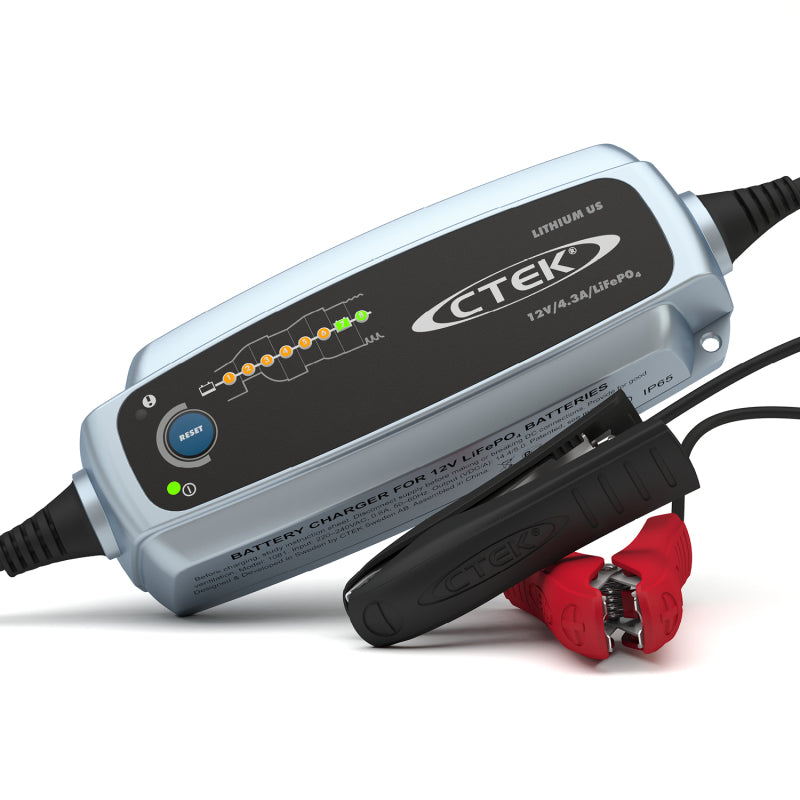Battery Charger vs. Jump Starter: Which One Do You Need?
In today's fast-paced world, our vehicles are an essential part of our daily lives. Whether you rely on your car for commuting to work, running errands, or going on road trips, a dead car battery can quickly disrupt your plans. That's where battery chargers and jump starters come into play. In this comprehensive guide, we'll explore the differences between these two essential automotive tools and help you understand which one you need to keep your car running smoothly.
Table of Contents
- What is a Battery Charger?
- What is a Jump Starter?
- Battery Charger vs. Jump Starter: The Key Differences
- When to Use a Battery Charger
- When to Use a Jump Starter
- How to Choose Between a Battery Charger and a Jump Starter
- Maintaining Your Car's Battery Health
- FAQ's
- Conclusion
What is a Battery Charger?

A battery charger is a device designed to recharge a car battery by supplying a steady current to replenish the charge in the battery's cells. These chargers are typically used when a vehicle's battery has lost its charge due to prolonged inactivity or as part of regular maintenance.
Battery chargers come in various sizes and capabilities. Some are designed for small batteries, like those found in motorcycles, while others are suitable for larger car batteries. They can be powered by plugging into a standard electrical outlet, making them convenient to use at home or in a garage.
One important thing to understand is that battery chargers need to be plugged in and left connected to the battery for an extended period to fully charge it. This process can take several hours, depending on the size of the battery and the charger's charging capacity.
What is a Jump Starter?

A jump starter, on the other hand, is a portable device used to jump-start a vehicle with a dead battery. It provides a sudden surge of power to the battery, allowing the vehicle's engine to start. Jump starters are invaluable in emergency situations when your car won't start due to a dead battery, and you're stranded away from an electrical outlet.
Portable jump starters are compact, easy to carry in your vehicle's glove box, and come equipped with jumper cables. They are powered by an integrated battery and can be charged using a standard electrical outlet or even through USB charging ports in some cases.
Battery Charger vs. Jump Starter: The Key Differences
Now that we've introduced both battery chargers and jump starters, let's delve into the key differences between the two:
1. Purpose
-
Battery Charger: Battery chargers are primarily used to fully charge a car's battery, typically over an extended period. They are ideal for maintaining a car's battery health during periods of inactivity.
-
Jump Starter: Jump starters are designed to provide a quick boost of power to a dead battery, allowing you to start your car when it won't start due to a drained battery.
2. Charging Time
-
Battery Charger: Battery chargers require several hours to fully charge a battery. They are not suitable for immediate jump-starting in emergency situations.
-
Jump Starter: Jump starters deliver instant power and can start your car within minutes, making them ideal for roadside assistance.
3. Portability
-
Battery Charger: Battery chargers are not as portable as jump starters. They need to be connected to an electrical outlet and are typically used in a garage or a fixed location.
-
Jump Starter: Jump starters are compact and easily transported. You can carry them in your vehicle's glove box, ensuring you have a reliable solution when you need it most.
4. Integrated Battery
-
Battery Charger: Battery chargers do not have an integrated battery and rely on a continuous power source from an electrical outlet.
-
Jump Starter: Jump starters have an integrated battery, allowing them to function independently without needing a continuous power supply.
5. Maintenance
-
Battery Charger: Battery chargers are used for periodic maintenance and cannot revive a completely dead battery.
-
Jump Starter: Jump starters can bring a dead battery back to life and get your car back on the road.
When to Use a Battery Charger
You should consider using a battery charger in the following situations:
-
Maintaining Your Car's Battery: Use a battery charger to maintain a car's battery health during periods of inactivity, such as when your vehicle is parked for an extended period.
-
Fully Charging a Battery: When your battery is partially discharged but not completely dead, a battery charger can fully charge it and ensure it's ready for use.
-
Charging Large Batteries: Battery chargers are suitable for charging larger batteries, such as those in RVs or boats.
When to Use a Jump Starter
A jump starter should be your go-to choice in the following scenarios:
-
Dead Battery: When your car battery is completely dead, and your vehicle won't start, use a jump starter to get it running again.
-
Emergency Situations: Keep a portable jump starter in your car for emergency situations when you're away from home or an electrical outlet.
-
Roadside Assistance: Use a jump starter to help yourself or others on the road when their car batteries have died.
How to Choose Between a Battery Charger and a Jump Starter
Choosing between a battery charger and a jump starter depends on your specific needs and usage. Here are some factors to consider:
-
Frequency of Use: If you frequently encounter dead batteries or need a reliable solution for roadside assistance, a jump starter is a must-have. However, if you mainly need to maintain your battery's health, a battery charger is suitable.
-
Portability: If you value portability and the ability to jump-start your car anywhere, a jump starter is the better choice. Battery chargers are bulkier and need to be used near an electrical outlet.
-
Battery Size: Consider the size of your vehicle's battery. If you have a larger battery, a battery charger with sufficient capacity may be required for efficient charging.
-
Emergency Preparedness: Having a jump starter in your vehicle's glove box is a smart move for emergency preparedness, especially if you often travel long distances.
-
Budget: Battery chargers are generally more affordable than quality jump starters. Consider your budget when making your decision.
Maintaining Your Car's Battery Health
Regardless of whether you choose a battery charger or a jump starter, it's essential to understand how to maintain your car's battery to avoid unexpected issues. Here are some tips:
-
Regularly Charge: If you have a battery charger, periodically charge your battery to keep it at an optimal level. This is especially important if your vehicle is not used frequently.
-
Inspect Battery Terminals: Check the battery terminals for corrosion or loose connections. Clean them if necessary to ensure a good electrical connection.
-
Check the Battery's Charge Level: Monitor your battery's charge level and recharge it when it falls below a certain threshold to prevent it from going completely empty.
-
Keep Your Vehicle Running: If possible, start your vehicle and let it run for a few minutes regularly to keep the battery charged.
-
Consider a Trickle Charger: If your vehicle is stored for an extended period, a trickle charger can maintain the battery's charge without overcharging it.
Frequently Asked Questions (FAQs)
What is the difference between a battery charger and a jump starter?
The main difference between a battery charger and a jump starter is their purpose. A battery charger is used to slowly charge a car battery over time, while a jump starter provides a quick boost of power to jump-start a car with a dead battery. If you want to learn about the differences between them, keep reading!
When should I use a battery charger?
You should use a battery charger when you need to charge the battery of your car over an extended period. It's great for maintaining your battery's health during periods of inactivity or when you want to achieve a full charge.
When is a jump starter more suitable?
A jump starter is ideal when you encounter a dead battery and need to get your car running quickly. It's perfect for jump-starting your vehicle in emergency situations, such as when your car won't start.
Can a battery charger start a car?
No, a battery charger cannot start a car with a completely empty battery. It is not designed for jump-starting. It's important to understand the limitations of a battery charger and use it for its intended purpose.
What's the difference between a car battery charger and a portable jump starter?
A car battery charger is used to slowly charge a battery, while a portable jump starter is designed for quick jump starts in emergency situations. The differences between these devices lie in their functionality and purpose.
Can I use a jump starter to fully charge a car battery?
While a jump starter can provide a quick boost to start your engine, it is not designed to fully recharge a car battery. It serves a different purpose than a battery charger.
Are jump-starters suitable for different types of batteries?
Yes, many jump-starters are versatile and can be used with various types of batteries, including lead-acid batteries. However, it's essential to check the battery needs of your vehicle and choose a compatible jump starter.
Can I use a jump starter to charge other devices, like power banks?
Some jump-starters come equipped with features like USB ports and may have the capability to charge other devices, such as power banks. However, their primary function is to jump-start vehicles.
How do I choose between a battery charger and a jump starter?
The choice between a battery charger and a jump starter depends on your specific needs. Consider factors like the frequency of use, portability, battery size, and budget when making your decision.
What are the key features to look for in a jump starter or a battery charger?
When selecting a jump starter, look for features like volt and amperage ratings, integrated LED lights, and the ability to store enough power for your needs. For a battery charger, consider features like full recharge capability and compatibility with your vehicle's battery.
These FAQs should help you understand the differences between a battery charger and a jump starter and guide you in choosing the right tool for your automotive needs.
Conclusion
In the battle of battery chargers vs. jump starters, both tools have their unique purposes and advantages. Battery chargers are excellent for maintaining battery health and fully charging batteries over time, while jump starters are indispensable for jump-starting vehicles with dead batteries in emergency situations.
To make the right choice, assess your specific needs and consider factors like frequency of use, portability, and budget. Having either a battery charger or a jump starter on hand will ensure that you're prepared for any unexpected battery-related issues, helping you get back on the road with confidence.




